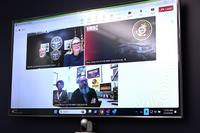Even as employers today find themselves competing more aggressively than ever to attract the best talent, the resume still matters.
Resumes serve as a reference to review your previous work experience and credentials; as a testament to your abilities to deliver on expectations; and as an indication of what you might be able to do for a future employer.
Consider that, on average, hiring managers and recruiters see 250 applications for each job posted and rarely have more than a few seconds to review a resume. While you may be comfortable with some of the general "dos" and "don'ts" of resume success (i.e., avoid typos, use a professional email address), consider these tips to ensure yours hits the mark and is seen in the right way:
1. Keep your resume updated.
On a regular basis, review and update your resume with new skills, keywords, certifications and other relevant information.
2. Ensure your information is ATS ready.
Most companies today use an Applicant Tracking System (ATS) software to preview resumes before they hit a human resources representative's desk. If your resume includes too many creative embellishments (fonts, graphics, design elements), the system may not read your document.
3. Include focused keywords.
An ATS (and a human reader) scans a resume for matches to the job description. Use keywords and terminology directly from the job listing.
4. Update social profiles.
Make sure your social media profiles are current, well-maintained and don't include too much personal material. HR managers and recruiters are looking at social media to learn more about candidates they're interested in.
5. Include your LinkedIn profile on your resume.
Opt for the customized URL version of your profile page instead of the string of numbers and letters auto-generated by the platform.
6. Keep your resume succinct and concise.
List the most relevant and pertinent information about your skills and work experience, and limit the use of adjectives and descriptors. Keep phrases short.
7. Ideally, aim for a brief resume.
If possible, limit your resume to one page, using a readable font size and with white space between sections.
8. Put your best points up top.
Ensure the HR manager or recruiter sees your most valuable information and best results by placing them upfront.
9. Consider a hybrid resume.
This format lists both skills and work experience, instead of a chronological list of your previous jobs.
10. Be choosy.
If you use chronology to show your work history, consider including just the highest-level information and leave off jobs that were long ago or in another career focus.
11. Strive for a simple format.
Your resume should look professional, simple and easy to read quickly. Simple is best in a resume.
12. Include a headline.
Consider a powerful upfront phrase to grab a recruiter's eye. Limit this headline to one line of text that describes you and what you offer.
13. List the results of your work.
Incorporate measurable, quantifiable and proven results. Whenever possible, include a metric, dollar amount or statistic in real numbers. Use numerals and symbols (e.g., 25%) not spelled-out numbers and percentages (e.g., twenty-five percent).
14. Cut down sentences.
Avoid personal pronouns, if possible. Try to get to the point quickly and sacrifice full sentences, if needed.
15. Use updated terminology.
Be knowledgeable about the current terminology used in your field today and avoid referring to outdated software, approaches or lingo.
16. Use action words.
Keep your resume active and positive in tone and content by using verbs that paint a picture.
17. Be mindful of the law.
Avoid including personal data that an employer cannot legally ask about (marital status, disabilities, information about financial health, etc.).
18. Tout your success.
Highlight any special accomplishments you garnered during the pandemic, including new skills, interests and work experience that might be relevant to the employer.
19. Only post truthful information.
Never, ever, ever, ever lie or mislead on a resume. This is a disastrous and long-lasting career mistake.
20. Include only technical skills relevant to the job.
Proficient at Adobe Photoshop? Great, if you're applying for a creative or graphics position. Not as relevant if you're working as an investment banker.
21. Avoid listing non-specific skills.
Wherever you can, clarify and quantify what you've done that directly relates to the job and company. Instead of saying "leadership skills," detail how you led, whom you led and the impact of your leadership skills on the organization.
22. Do not include any photos.
No photo of you, your family, your pets, your neighborhood. None.
23. Be sure to include current contact information.
Surprisingly, many resumes fail to include an updated phone number or email address.
24. List hobbies and volunteer activities if they are relevant.
For example, you might demonstrate your commitment to mentoring at-risk youth by including your volunteer work at local youth centers. But listing that you ran a 5K benefitting a pet shelter may not be as relevant.
25. Personalize it.
Don't forget to reveal your personality and personal brand. Companies want to hire people whose values and goals align with theirs. Don't hide this side of yourself from your resume.
The resume can be a daunting document to transitioning service members; after all, this may be your first time writing one. Follow these tips and best practices to ensure that your resume meets the employer's interests and needs, and moves you to the interview.
The author of "Success After Service: How to Take Control of Your Job Search and Career After Military Duty" (2020) and "Your Next Mission: A personal branding guide for the military-to-civilian transition" (2014), Lida Citroën is a keynote speaker and presenter, executive coach, popular TEDx speaker and instructor of multiple courses on LinkedIn Learning. She regularly presents workshops on personal branding, executive presence, leadership communication, and reputation risk management.
A contributing writer for Military.com, Lida is a passionate supporter of the military, volunteering her time to help veterans transition to civilian careers and assist employers who seek to hire military talent. She regularly speaks at conferences, corporate meetings and events focused on military transition.
Want to Know More About Veteran Jobs?
Be sure to get the latest news about post-military careers, as well as critical info about veteran jobs and all the benefits of service. Subscribe to Military.com and receive customized updates delivered straight to your inbox.












